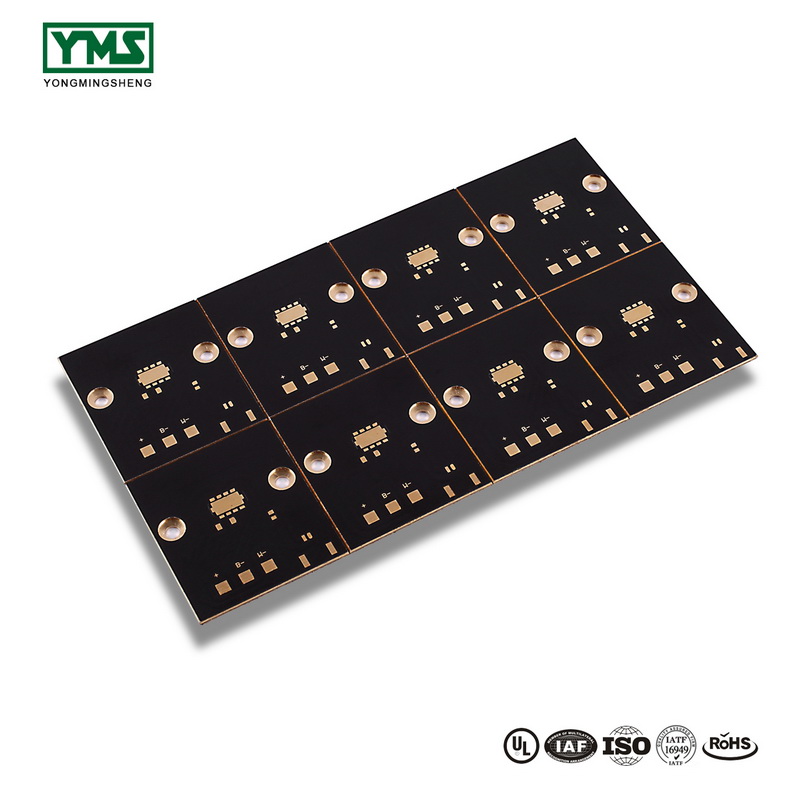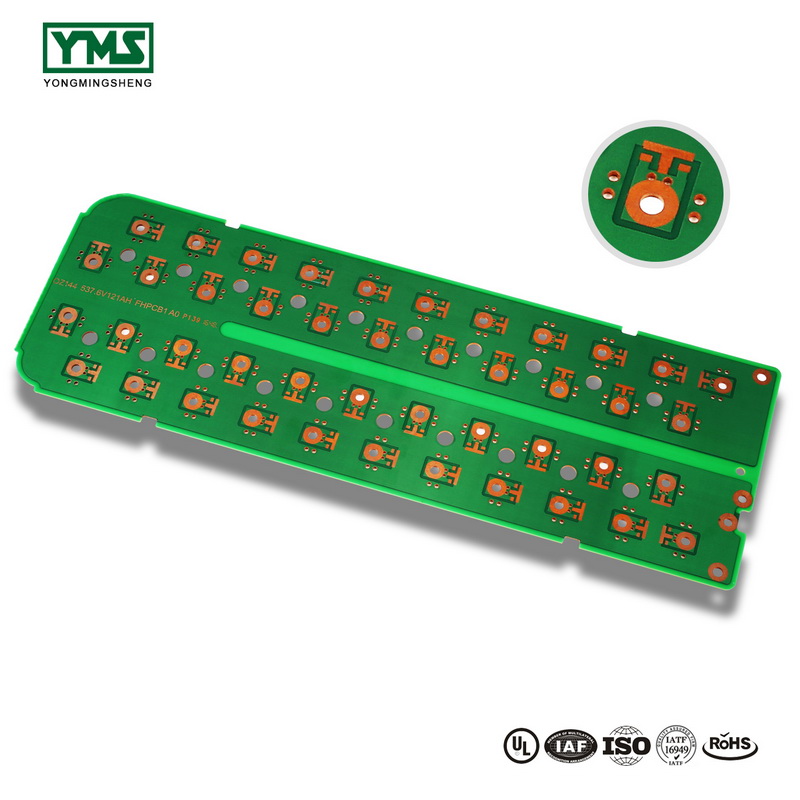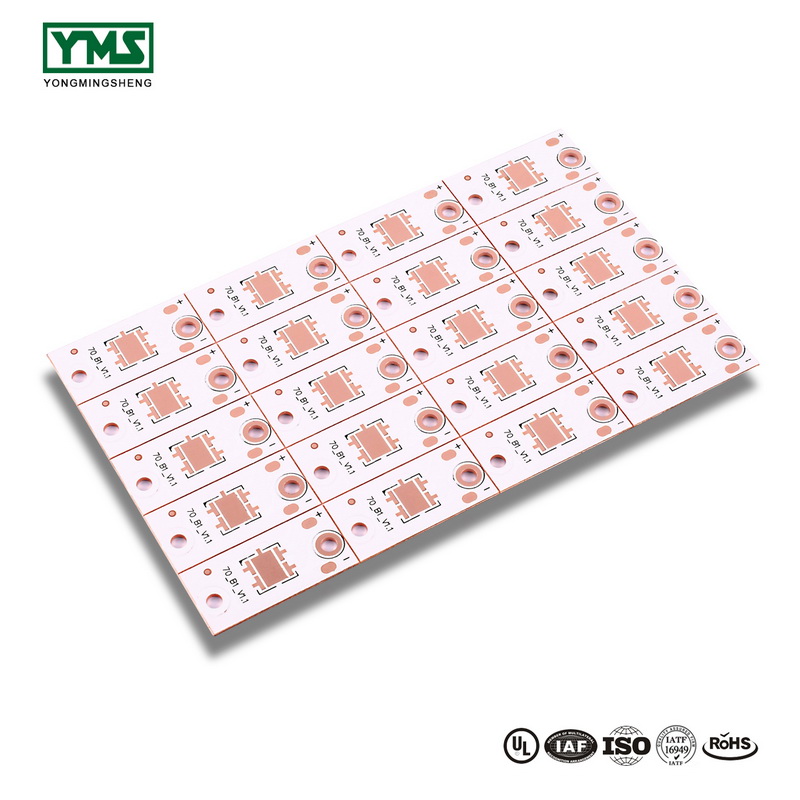Chinese PCB board manufacturers tell you 10 simple and practical PCB board cooling methods:
1. Heat is dissipated by the PCB itself.
The most widely used PCB boards are copper-clad/ epoxy glass cloth or phenolic resin glass cloth, as well as a few paper-based copper sheets. Although these substrates have excellent electrical performance and processing performance, they have poor heat dissipation. As the heat dissipation path of high-heating components, it is almost impossible to expect heat conduction from the resin of PCB itself, but heat dissipation from the surface of components to the surrounding air. However, as electronic products have entered the era of miniaturization of components, high-density installation and high-frequency thermosetting assembly, it is not enough to rely on components with very small surface area to dissipate heat. At the same time, due to the extensive use of surface mounted components such as QFP and BGA, a large number of heat generated by components is transferred to the PCB board. Therefore, the best way to solve the problem of heat dissipation is to improve the heat dissipation capacity of the PCB itself in direct contact with the heating components, and conduct or send out through the PCB board.
2. High heating device and heat conducting plate.
When there are a few components in PCB with high heat (less than 3), heat sink or heat conduction pipe can be added to the heating components. When the temperature cannot be lowered, a radiator with a fan can be used to enhance the heat dissipation effect. When the number of heating elements is large (more than 3), a large heat sink (plate) can be used, which is a special radiator customized according to the position and height of heating elements on the PCB board or a large flat radiator with different element height and positions. The heat dissipation cover is fastened to the surface of the components, which can be in contact with each component to dissipate the heat. However, due to the poor consistency in the installation and welding of components, the cooling effect is not good. Therefore, soft thermal phase-change thermal pad are usually added on the surface of components to improve the heat dissipation effect.
3. For devices cooled by free convection air, it is best to arrange integrated the circuit (or other devices) in a longitudinal or transverse arrangement.
4. Adopt reasonable line design to realize heat dissipation.
Due to the poor thermal conductivity of the resin in the plate, and copper foil line and hole is a good conductor of heat, so improve the copper foil residual rate and increase the thermal conductivity hole is the main means of heat dissipation. To evaluate the heat dissipation ability of PCB, it is necessary to calculate the equivalent thermal conductivity (9 eq) of insulating substrate for PCB composite materials composed of various materials with different thermal conductivity.
5. On the same piece of PCB device should as far as possible according to the calorific value of the size and degree of heat partition is arranged, calorific value is small or poor heat resistance devices (such as small signal transistor small-scale integrated circuit, electrolytic capacitors, etc.) on the cooling airflow of the best at the entrance, calorific value big or good heat resistance devices (such as power transistor large scale integrated circuit, etc.) in the most downstream cooling airflow.
6. In the horizontal direction, high-power components should be arranged as close as possible to the edge of the circuit board to shorten the heat transfer path. In the vertical direction, high-power components should be placed as close to the top of the board as possible to reduce the effect of these devices on the temperature of other components while they are working.
7. The heat dissipation of the printed circuit board in the equipment mainly depends on air flow, so the air flow path should be studied in the design, reasonable configuration of devices or printed circuit boards. Air flow tends to flow where the resistance is small, so when configuring components on a printed circuit board, avoid leaving a large space in an area. The same problem should be paid attention to in the configuration of multiple printed circuit boards.
8. The temperature sensitive device is best placed in the lowest temperature area (such as the bottom of the device), do not put it on the top of the heating device, multiple devices had better be staggered layout on the horizontal surface.
9. Place the device with the highest power consumption and the largest heat dissipation near the optimal position for heat dissipation. Do not place higher heating devices at the corners and edges of the board unless heat sinks are arranged nearby. Choose larger devices when designing power resistors, and adjust the layout of the board to allow for adequate heat dissipation.
10. Avoid the concentration of hot spots on the PCB, distribute the power evenly on the PCB board as much as possible, and keep the temperature performance of the PCB surface uniform and consistent. It is difficult to achieve strict uniform distribution in the design process, but it is necessary to avoid the area with too high power density, so as to avoid hot spots that may affect the normal operation of the whole circuit.
Huizhou Yongmingsheng Technology co., ltd. were successively established. Our enterprise is a high-tech enterprise which professional manufacture and sale high-precision single, double, multi-layer PCB, FPC, metal pcb, Flex-Rigid Board and aluminum base board.
Post time: Nov-12-2019



